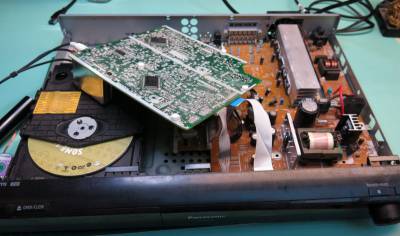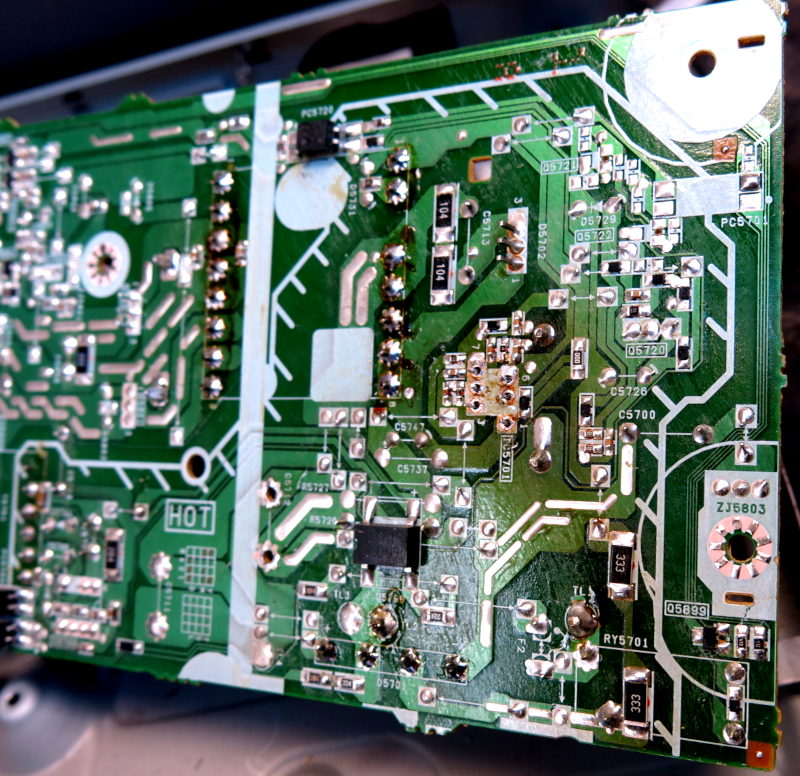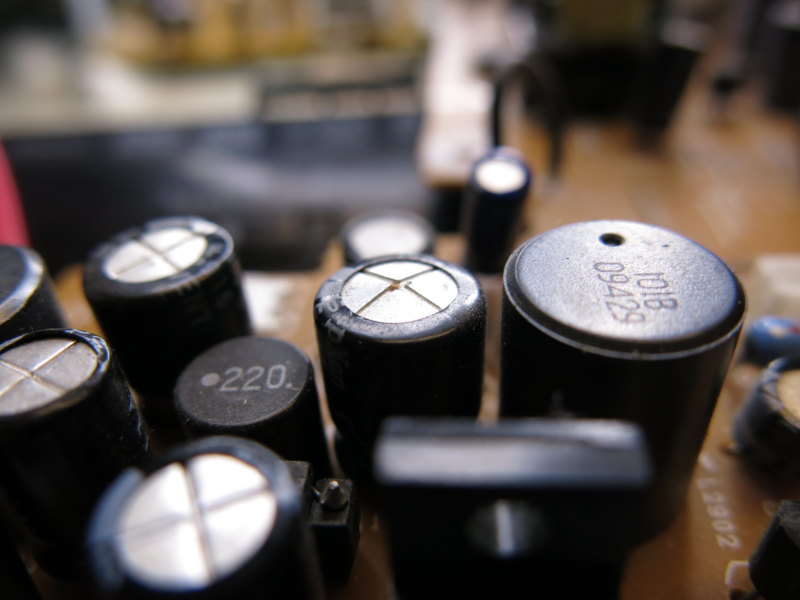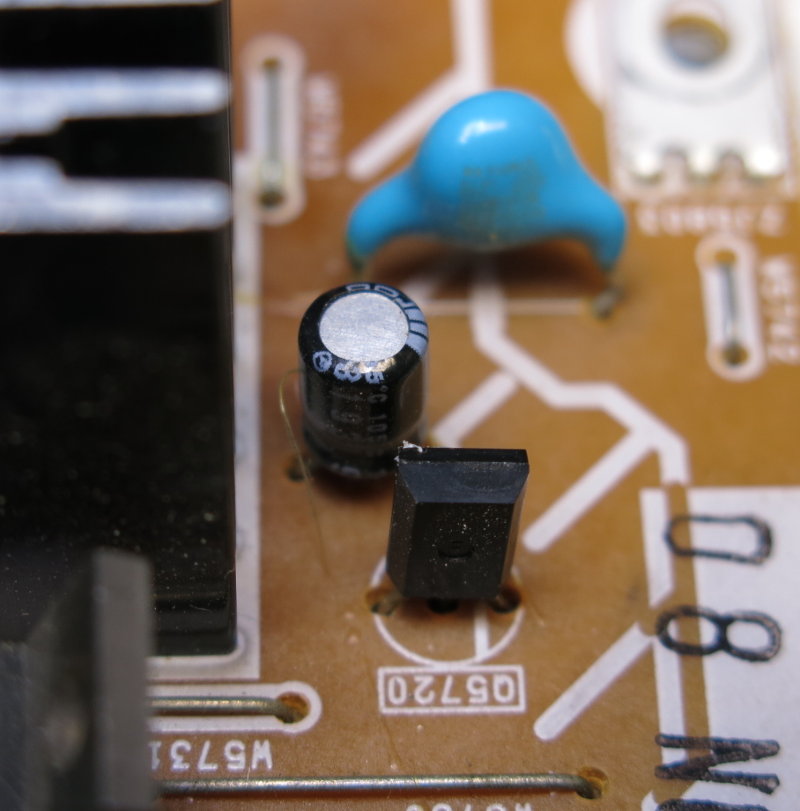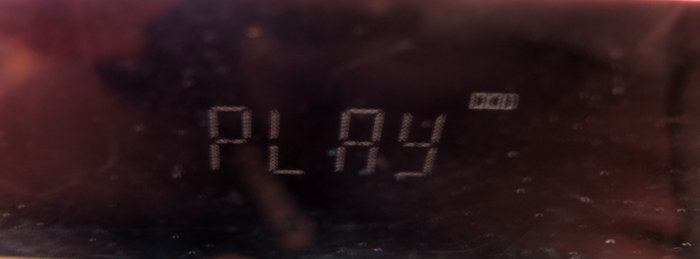Panasonic SA-PT170 Repair
On the bench this time is a Panasonic Home Theatre System, the SA-PT170, or sometimes labelled as an SC-PT170.
This unit was working for a good solid ten years but would no longer turn on. When pressing the power button, there would be a relay click then one second later a second click as the power shut off. No display showed on the front of the unit.
Pressing the power button a second time would produce two more clicks. Further presses of the power button there was nothing. When turning the power off and on at the wall, the double clicks could be reproduced again.
First step was to open the unit up and locate the power supply board. There appeared to be a AC inlet PCB passing over a fuse and filters then onto the Switch Mode Power Supply PCB. Or SMPS from here on in.
There was a bit of work to remove all the screws from the rear panel and then the logic boards on top to free up access to the SMPS. All the boards and the panel at the front all connect with a variety of cable and ribbon cables.
Once all removed, I could gain access to the main power board. I did not desolder the T1 and T2 wires from the AC inlet PCB as it would make tests difficult. However not doing this made accessing the underside of the main power board difficult.
I had to make do with having the board sit up in a perpendicular fashion, and keep some of the required ribbon cables connected as the best compromise.
I started with a visual inspection of the underside of the SMPS PCB.
Something immediately stood out as a potential issue: the entire area around the IC5701 power IC which is an STR W6765N. The region was quite visually discoloured or burned. Obviously the IC had taken in a tremendous amount of heat. My guess was this was occurring over a long period of time. No way of knowing for sure.
First checks were for the fuses on the AC inlet PCB and SMPS PCB. Both were fine.
Then I wanted to see if the AC was making it from the inlet PCB to the SMPS. Sure enough 230V AC was being passed across fine and the rectifier was producing DC and storing fine in the 400V capacitor. The rectifier itself tested out fine in diode mode as well.
I wanted to test the actual relay switch in case the fault was there. So I removed it from the board and made a little polarity error in testing and let a little blue smoke out. Luckily I had a spare of the exact same relay, and I replaced it on the spot.
All significant resistors and diodes checked out ok.
Next was to see if there was damage to any of the surface mount components under the SMPS around the STR W6765N. I did notice that diode D5899 seemed to be open, though it could have been a furphy from a parallel component.
I removed the diode from the board and retested. Sure enough it was knackered. Replacing it was a problem. Markings on surface mount diodes are vague and I tried to scour the internet to see if I could locate the maker and value.
I soon gave up. Next step was to at least try and work out what the value was from the schematic.
That became the next obstacle: trying to find the schematic. I searched every site I could possibly get my hands on. The only manuals I could locate were the installation and operator manuals.
I contacted Panasonic to ask them for a copy of the Service Manual, and while they kindly got back to me, they explained that the could only release those manuals to registered Service Centres.
It took a lot of sleuthing, but I finally located a manual here: https://elektrotanya.com/panasonic_sa-pt170ph.pdf/download.html#dl
Now that I had a service manual, I located the diode and was able to recall which direction to replace it (which is pretty important for a diode).
The issue was, I didn't record which way it went on. And even if I did, I'd since sneezed or knocked the container the diode sat on, and it flew away in the breeze.
The service manual indicated that the D5899 diode was a MA2J11100L, and using the datasheet for that part, I found that a 1n4148 would be a suitable replacement. But not being a surface mount component, I had to be a little creative in soldering this diode onto the pad.
This done, I hooked up the boards again to try the unit.
Pressing power still clicked on and off. No change.
Now that I had the service manual, I wanted try the diag mode outlined there. The problem was that without any power staying on, diag mode wasn't a whole lot of use.
The next component I suspected was the KS2102 diode. The datasheet had me believing mine was way out of spec or damaged, but I found a post on BadCaps (see the references at the end) where another repairer tested his and the result of both sides was almost identical with mine. I placed mine back on the PCB.
Going back to the original suspect, the STR W6765N IC and the colouring of the board. I didn't have this chip on hand, so I put an order in and put the repair aside for a few days.
Five spares arrived but I was a little disappointed to see that instead of STR W6765N's, I received STR W6765's instead despite explicitly asking the vendor to double check, and they reassuring me I would receive N's. This aside, I didn't know exactly if the difference would be much.
I removed the old STR W6765N and swapped it with one of the replacements.
Connected up and checked the power switch. No change.
Time to go back to basics.
It was time to turn my attention to the other electrolytic capacitors on the SMPS PCB. I hesitated doing this before due to the obscured access to the entire board. However, I put the effort in to check all capacitors.
And yes, there was a problem. C2922 was bulged and the ESR was way out of spec. This was replaced.
C5726 wasn't too crash hot either. It wasn't bulged or leaking, but that was swapped out too.
Connected up everything and tried the power. Could you believe it? No change at all. Still two relay clicks, and no power.
At this point, after scouring all the tips I could find from the Service Manual, I ended up finding this video from a repair on a similar model with the same symptoms: https://www.youtube.com/watch?v=2IX45y_Ml4g
In this case, the cause was the STR IC, almost the same one as I had swapped out.
I decided I had little to lose, but try another STR W6765 IC. I did.
Connected up, and press the power button.
Success!
The power clicked on and the LCD showed a display.
So what was it? I can only assume that even though I had fixed the diode, perhaps the other damaged components did very little to help the new STR W6765 that I put it. It was either killed on start, or it could have been a “dead on arrival”.
Either way, once the faulty caps were replaced first, then a fresh STR W6765 all was well. Unit tested perfectly. Picture and sound were rock solid.
Time to return this to it's owner and call this one a win.
As usual, some daft mistakes along the way: not being careful with surface mount parts and orientation, zapping myself a little on the filter cap, and not starting with the basics first.
But then… some mothers do 'ave 'em eh?
References
- https://www.badcaps.net/forum/showthread.php?t=43407&page=2 was good to learn about KS2102. Seems good comparing my tests with his.
